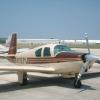Even with the total production we have today, the total number of "our" GA airplanes is dwindling down.
Many times because of avoidable mistakes. With the number of "old" airplanes and their hull values,
lots of "other than normal" landings are totalled out to the junkies.
Have many of us have ever tracked the number of wrecks in GA every week, week after week after week?
Or do we just follow those that make the news cycles?
Its sobering to follow the story. What was the phrase in Bubba Gump?
Stupid is as stupid does?
We, as a group, keep making the same mistakes year after year after year. The same ones made 75 years ago.
One would think that we would learn but the knowledge is not being transferred to new pilots or if it
is, it's being ignored. Both are not good for us as an industry.
After 50+ years of flying from FL450 down to scud running I've formed a couple of positions on flying.
One of them is that this business of ours can kill us, as Lt. Selfridge found out back in 1908 while
flying with Orville Wright.
Hisory repeats itself and those who ignore history are bound to repeat it, up front and very personal!



